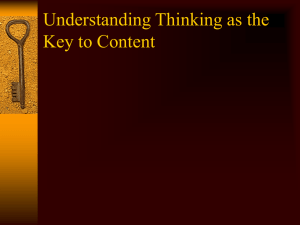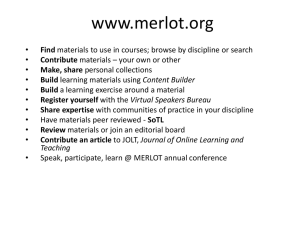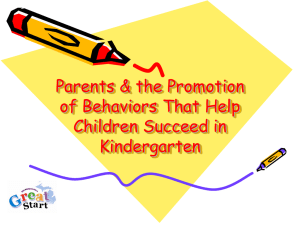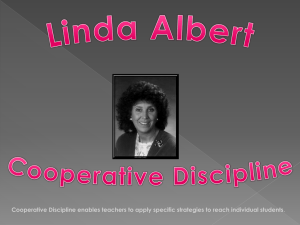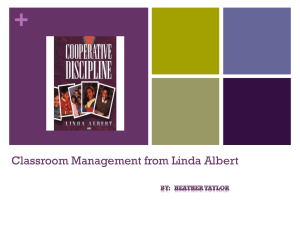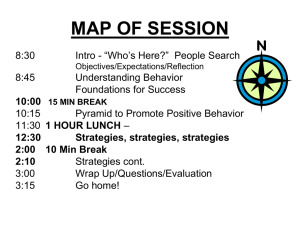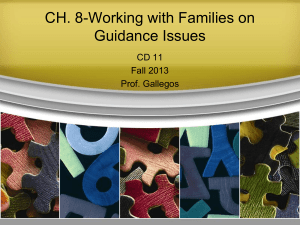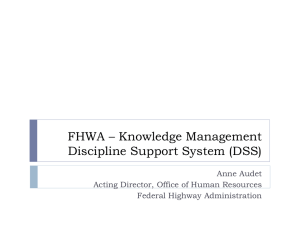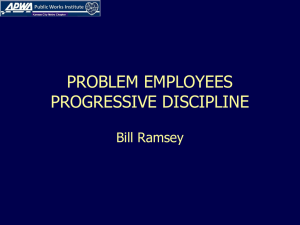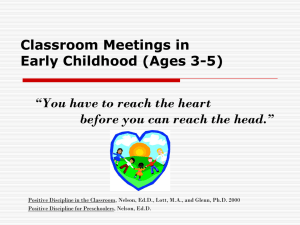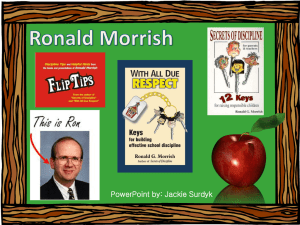Effective Discipline Techniques PowerPoint
advertisement
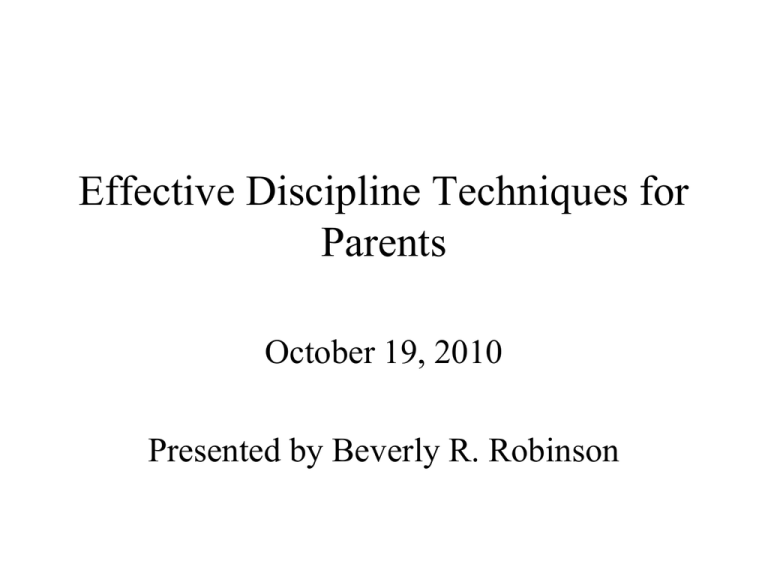
Effective Discipline Techniques for Parents October 19, 2010 Presented by Beverly R. Robinson Ways to Help Children Become Emotionally Healthy • • • • • • • • • Explaining Touching Hugging Listening Being honest Being open Being together Trusting Setting limits • • • • • • • • • Respecting Fostering independence Not judging Encouraging Returning feelings Supporting Empathizing Teaching Working together When you think of disciplining What do you think of ? Do you think of ? Discipline Discipline is the use of methods to teach children behavior guidelines. Teaching these guidelines should begin as the child begins to move around. To get along in the world… • Children need some basic guidelines for behavior. • Adults have the responsibility to teach children how to behave. • Older brothers and sisters help by setting good examples. Discipline Teaches • Self-control • Limits • Behavior patterns that are acceptable to society. It should involve respect, support and encouragement as well as communication of limits or boundaries. Effective discipline should be based on: Love and Understanding Effective Techniques Set limits with rules Rules are necessary to protect a child from danger and set examples of acceptable behavior. Everyone is more confident and comfortable knowing how to act in a new situation. Communication Tell the child what he or she should do rather than what they should not do! Keep explanations simple and brief, they have limited vocabulary and a limited attention span. Be prepared to repeat over and over to toddlers. The difficult hostile child is the one who needs love and guidance the most! Positive Reinforcement • Children repeat the actions they are praised for! • Children give up any actions that are ignored by others. Be Consistent! Discipline the same way every time that behavior occurs. Be Fair! It may vary from one child to another. Be Firm! Stick to your rules. Rewards • Reward the good behavior – don’t only notice the negative behavior. • Be immediate and direct with discipline and rewards – hugs are free! DO: • Set good examples and be the role model. • Discipline on the spot-the child may forget why he/she is being punished. • Use timeout-remove the child from the misbehavior- this should give them time to think about the misbehavior. • Take away privileges to promote desired behaviorespecially with older children. • Discipline the behavior-not the child! • Consider the child’s age and ability. Exploration is common for toddlers. • Match the consequence with the crime (misbehavior). DON’T: • Rely on physical punishment-use it sparingly! • Make threats you cannot keep – older children. • Do not yell – talk to the child and explain why he or she should or should not do certain things. • Parents should be in agreement about discipline or not be in disagreement in front of the child. Negative Reinforcement Punishment • It tends to discourage the behavior with which it is associated. • Punishment should not take the place of encouragement and clearly stated limits. • It can be part of positive and effective discipline, when used with good judgment. Adolescence Parents must make clear and sensible rules about many areas of concern for teenagers: • Driving • Using drugs, alcohol, and tobacco • Dating • Use of technology • Choosing friends and activities with friends during “free” time • Curfews Adolescence • The same rules for disciplining children apply to adolescents. The tone was set as children. • Adolescents want the rules and consequences to be fair. • They want to be respected as a young adult. • But, they must understand their parents rules and consequences, in advance. • Take away privileges: cell phone, driving, party or friends. Effective Discipline Techniques Beverly R. Robinson bero@woccisd.net
